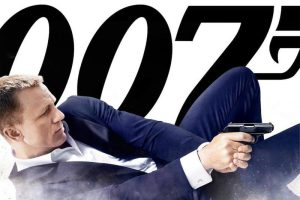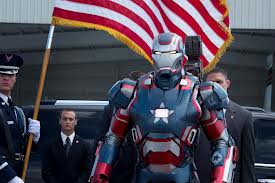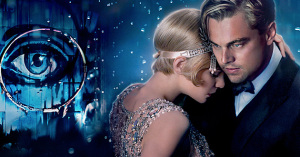According to World War Z, two things can trigger a zombie apocalypse: 1) stay-at-home dads, and 2) kindness to Muslims. It is nice, however, to see an American blockbuster starring Brad Pitt as that most un-American of creatures, a U.N. Investigator.
My book club recently spun off a zombie club of college professors, two in Economics and one in English, me (a Philosopher may be joining us soon too). I presented a conference paper on The Walking Dead last winter, but my knowledge base is dwarfed by the guy who makes guac on movie nights. So far we’ve only watched The Night of the Living Dead. We’d schedule Dawn of the Dead (the remake for some reason), but postponed when a wife (also an Economics professor) got called to Abu Dhabi on a family emergency.
George Romero, director zero in the genre contagion, gave his ghouls a clear cause: radiation from a returning Venus space probe. Brad spends most of WWZ’s 116 minutes and $190 million dollars searching for clues. Walking Dead creator Robert Kirkman doesn’t care. But in terms of theme and discourse, the answer is always scene one.
Every zombie story (and, arguably, every story of every genre) begins with something rotten in the state of Denmark. It takes less than ten minutes (including the insufferably slow credits sequence) for that creepy old man to lurch at Barbra in the cemetery, but Night of the Living Dead has already provided a horde of apocalypse-triggering conflicts spawning across issues of religion, nation, capitalism, and family:
Johnnie’s stopped going to church and jokes about being damned. Romero shoots the American flag flapping backwards from a veteran’s grave. Is the exploitive funeral industry stealing the wreath off the grave and selling it back to them every year? The family unit is shattered in multiple directions: parents vs. children, brother vs. sister, grandparent vs. grandson. The kids discuss digging up the only vaguely remembered dad so they don’t have to drive hours out of town on their mother’s orders. Time itself is upturned. The first line of the film is a complaint about daylight savings.
World War Z is simpler. The pre-zombie preamble is an ode to the domesticated male. Brad Pitt is the perfect stay-at-home dad. His blissfully happy daughters joke that all he does since quitting his job is make breakfast, but his pancakes are better than Michael Keaton’s in Mr. Mom. Brad doesn’t mind scolding everyone to put their dishes in the sink, but in thematic terms, this is an apocalyptic inversion of stability. His bread-winning wife doesn’t even help with the plates.
When things heat up during the morning commute (Brad is chauffeuring everyone to school and work), his wife takes the wheel while he assumes the traditionally maternal duty of calming and comforting the asthmatically panicked daughter. If you were hoping for a 21st century vision of shared gender roles, the formal plot doesn’t start till the wife is safely tucked away with the children. Her only job now is being a mom. Dad, meanwhile, reveals the secret depth of his professional prowess, including the power to call rescue helicopters down from the sky. In fact, he may be the only man left with a shot at saving the world. Sure, he only takes the job to safeguard his family, but at that moment the world has already been righted. Zombie plague restores domestic order.
Kirkman plays a similar game in Walking Dead. The comic book is a paean to traditional gender—though kudos to the TV team for trying to shake that up a bit. The zombie ur-heroine Barbra is significantly worse, a knock-off of Hitchcock’s Melanie in The Birds. When the going gets tough, the gals collapse into semi-catatonic dementia. Fortunately, Barbra retreats to a farmhouse first, which Ben (he wasn’t black until Duane Jones showed up for the casting call) boards up. This is where economic theory comes in. How do external threats alter group behavior? Which is the more profitable strategy: staying mobile or hunkering down?
World War Z is explicit about both. Director Marc Forster literally spells it out in subtitles: “Movement is life.” Not that those very nice but ultimately very stupid Spanish parents listen to Brad. And look who gets eaten in the next scene. Meanwhile, Israel boards up their whole country. But they also let in Muslim refugees, figuring a grateful live Muslim is better than an angry dead Muslim. Cooperation skyrockets as Israeli soldiers nod and smile and even hand over the PA system for group singing. I’ve never seen an airport customs line half as chummy.
But as every zombie fan knows, hunkering never works for long. Images of Middle East peace last two, maybe three minutes. Romero boarded up the Monroeville Mall (about two miles from my childhood home) for his first sequel, Dawn of the Dead, but its collapse is nothing to the geysers of Palestinian zombies flooding into the last nation on Earth. CGI turns Romero’s lurching latex-painted extras into blood cells gushing through urban arteries. Israel dies from its own kindness—a political allegory a lot of right wingers can probably live with.
That’s where Romero would have left things, with Brad ascending from the Tel Aviv airport into the ambiguous but not particularly hopeful unknown. WWZ is a 1950s scifi. When Don Siegel tried to end Invasion of the Body Snatchers with a chillingly open-ended “They’re coming!”Hollywood sent him back to the editing booth to tack on their contractual, world-is-saved last scene. Forster uses the same one. It turns out zombies dissolve in water! Or something like that. Which is also why at its surprisingly non-gory heart, WWZ isn’t a zombie movie.
Yes, these zombies are sprinters. And, no, they don’t eat the flesh off our bones—just a quick nibble and it’s welcome to the team. But their real genre faux paus is their willingness to bow to the deus ex machina of the human spirit. That’s the formula and American self-image Romero so thoroughly gutted in 1968. In Night of the Living Dead, the center doesn’t hold. Daughter eats mother, brother eats sister, and a posse of deputized rednecks gun down the last rugged individual. In fact, there never was a center. Government, family, God, those are just boards we nail around ourselves while waiting for oblivion to splinter through.
Not true of WWZ. Sure, the American experiment fails (our cops are just more lawless looters), but the world government holds. Instead of retreating to upstate Maine to wait out the vampire plague of I Am Legend (Romero’s literary influence), Brad’s patriarchal family reunites in Nova Scotia. Yeah, that’s right. Canada and the U.N. save humanity. Talk about a horror story!













